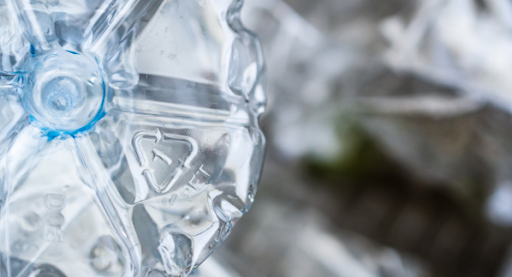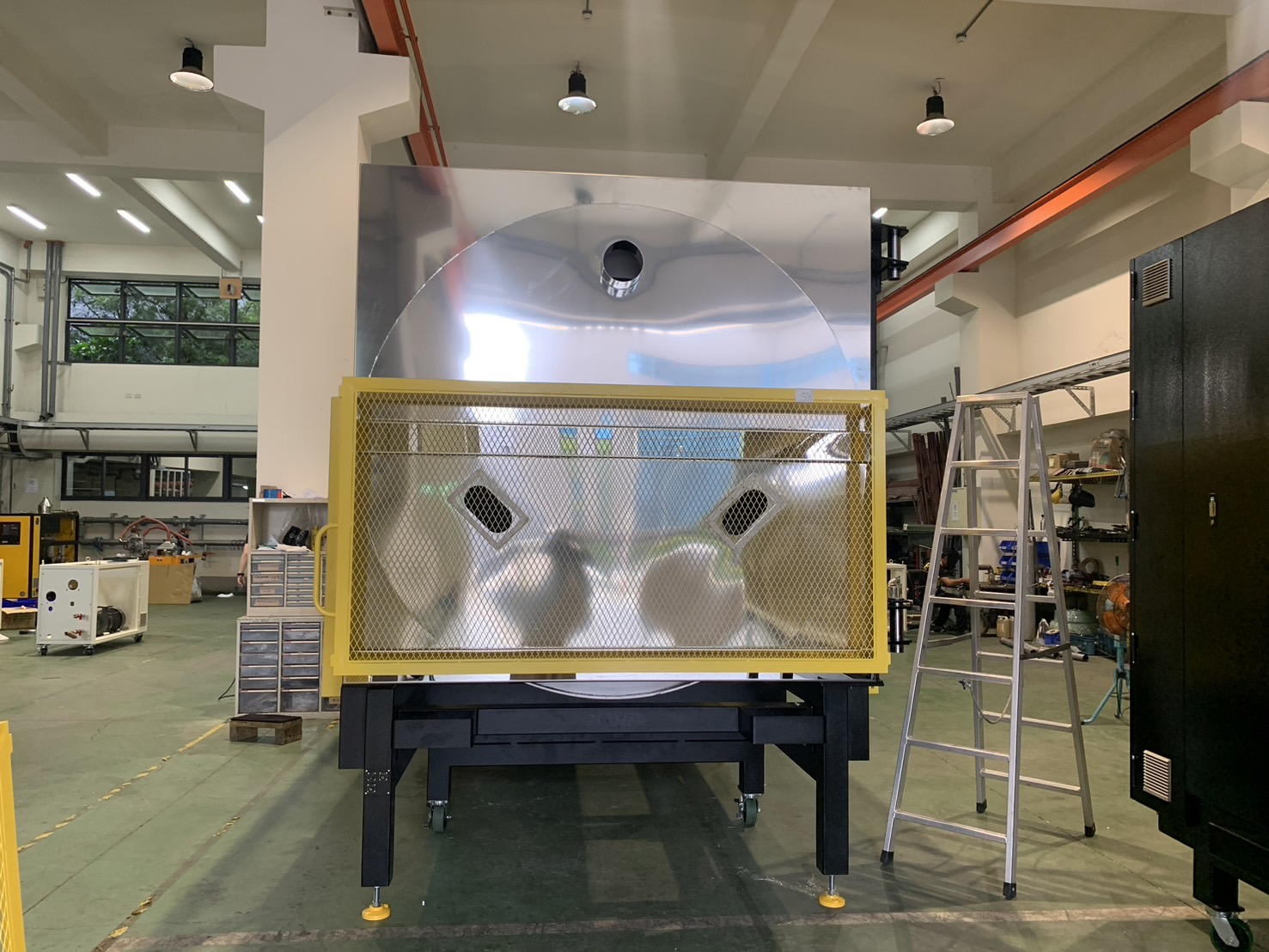Revolutionizing PET Processing: An Introduction to Infrared Rotary Dryer Technology
- 2024.02.07
 Flying Tiger
Flying Tiger
Polyethylene Terephthalate (PET) processing has long presented a significant challenge for various industries. Both plastic drying and plastic crystallizing are complex processes, and they require new, efficient methods to improve quality and efficiency. Traditional industrial drying equipment works, but it’s neither energy efficient nor high quality. Today, we need better solutions for drying and crystallization equipment. That’s where the Infrared Rotary Dryer comes into play.
Flying Tiger's Infrared Rotary Dryer is a groundbreaking solution for the PET processing industry as it eliminates the limitations of traditional drying systems. This new technology is a revolution in infrared drying systems, promising efficient production, energy-saving capabilities, and exceptional quality management.
So, how exactly is the Infrared Rotary Dryer revolutionizing this space? What exclusive features does it offer?
For one, PET materials no longer need lengthy processes. They can now be crystallized and dried in just 10 to 20 minutes, allowing for faster startups and changeovers. What's more, they show operational excellence by saving 20 to 50% more energy than traditional dehumidifiers. Here is a deeper dive into the Infrared Rotary Dryer technology and how it is changing the game in PET processing.
Unveiling the Infrared Rotary Dryer Technology
Equipped with a high-speed rotating drum, Flying Tiger's Infrared Rotary Dryer uses infrared heaters as its primary source of heat transmission. But here's the kicker: This infrared drying system is different from other methods because it can crystallize and dry PET materials at the same time.
In traditional infrared drying systems, the PET material would have to undergo another process to crystallize. Even then, the quality and efficiency might not meet the standard because the heat isn't evenly distributed. The Infrared Rotary Dryer simplifies the traditionally taxing two-phase process into a single step that combines crystallization and drying.
The device, infrared heaters, are evenly placed on the rotating drum to touch the PET material, enabling a well-distributed, regulated heat output. Additionally, the drum features three to four separate heating zones, each with independent temperature controls. This ensures every piece of PET material is treated with the necessary heat, providing consistent quality in crystallization and drying across the board.
The end result is a PET material that is primed and ready for further processing.
Advancements in Efficiency
Having outlined the operational features of the Infrared Rotary Dryer, it's crucial to examine its efficiency, a key aspect that sets it apart from traditional drying systems.
Energy efficiency is a fundamental concern in industrial operations due to its direct impact on operational costs. Traditional drying systems have a high energy consumption rate, often driving up expenses to unsustainable levels. In contrast, the Infrared Rotary Dryer has been designed to consume less energy while maintaining effective drying and crystallizing capabilities. This makes it both an eco-friendly and cost-effective solution for PET processing.
The system achieves these energy savings primarily through the use of infrared heaters. Unlike traditional heating elements, these heaters provide targeted and effective heating while reducing overall energy usage. To put this into concrete terms, the Infrared Rotary Dryer offers energy savings ranging from 20 to 50% when compared to conventional drying methods.
In addition to energy efficiency, time is a valuable metric that impacts the bottom line. The Infrared Rotary Dryer significantly reduces the processing time required for drying and crystallizing PET materials, taking only 10-20 minutes as opposed to the hours required by conventional systems. This reduced time commitment allows for increased production volume, leading to higher throughput and, consequently, increased revenue.
In summary, the Infrared Rotary Dryer is not a marginal improvement over existing technology; it's a significant advancement. It excels in critical performance indicators like energy efficiency and processing time, making it an impactful innovation for a range of industrial applications.
Comparative Analysis of Traditional vs. Infrared Drying
We've discussed how the Infrared Rotary Dryer outperforms traditional industrial drying systems. But how do they actually measure up against each other? In this section, we'll compare them based on performance, efficiency, and cost to operate.
Performance
Traditional drying methods often fall short in distributing heat for crystallization and drying, which leads to inconsistent PET material quality. Meanwhile, the Infrared Rotary Dryer has a unique design, featuring infrared heaters and a rotating drum. This design makes sure that heat is evenly distributed. This leads to consistently higher quality output and reduces the risk of sub-par PET material getting past the processing stage.
Efficiency
Traditional PET dryers operate in two distinct stages—crystallizing and drying. These processes could take hours, making them less efficient and extending the production cycle. However, the Infrared Rotary Dryer combines these steps and finishes in just 10 to 20 minutes. This leads to greater efficiency that puts idle time to good use, contributing to higher throughput.
Operational Costs
Energy consumption equals cost in the industrial world. Traditional drying methods notoriously use a lot of energy and increase costs. The Infrared Rotary Dryer, in stark contrast, is all about energy conservation. As has already been mentioned, it can save 20 to 50% of energy compared to traditional systems, which means big cost savings.
All in all, Infrared Rotary Dryer technology improves PET processing. It works better, is more efficient, and costs less to operate. While useful in their own right, the traditional methods find themselves being outperformed by this remarkable innovation. Industries wanting to improve productivity and save money in their PET processing operations will need to adopt advanced applications like the Infrared Rotary Dryer.

Real-World Implications of Infrared Drying Technology
Now, let's look at various industries that could benefit and discuss how this solution aligns with modern sustainability and efficiency goals.
Obviously, the PET processing industry is the first, and perhaps most immediate, beneficiary. Using the Infrared Rotary Dryer results in a direct positive impact on the bottom line, making it an attractive option for companies in this space.
Then consider the food and beverage industries, where PET is commonly used for packaging. Energy efficiency and faster processing also reduce costs and increase productivity in this case.
The pharmaceutical industry also uses PET materials a lot. They could use this technology to make their fabrication process better. It would help them bring new medications and treatments to market faster and cheaper.
But the Infrared Rotary Dryer doesn't just stop at being beneficial for specific industries. Industries worldwide must now maximize efficiency and minimize environmental impact due to increasing pressures and the Infrared Rotary Dryer aligns perfectly with these demands.
Flying Tiger's Leading Role in Advanced PET Processing
Indeed, operational excellence is at the core of Flying Tiger's ethos — a commitment to maximizing efficiency while maintaining high-quality standards. Our Infrared Rotary Dryer merges the processes of crystallization and drying into a streamlined 10-20 minute operation, considerably boosting throughput and reducing inefficiencies associated with long processing periods.
From an energy standpoint, the potential savings of up to 50% demonstrate a significant advance in energy conservation, which usually feeds directly into operational cost savings, a crucial aspect of operational excellence. It also aligns Flying Tiger with the global momentum towards sustainable, energy-efficient industrial practices.
Moreover, as the challenges within the PET processing industry evolve, embracing innovative technologies such as the Infrared Rotary Dryer becomes an operational imperative. By leading the charge in integrating this technology into its solutions, Flying Tiger addresses the need for speed, efficiency, cost-effectiveness, and sustainability.
The Infrared Rotary Dryer technology represents a significant leap forward in modernizing PET processing, and wide-ranging benefits span multiple industries. For Flying Tiger, the integration of the Infrared Rotary Dryer technology represents a proactive and strategic response to the demands of the growing industry.
Eager to learn more about the Infrared Rotary Dryer and how it can revolutionize your PET processing operations? Visit our website for more information and feel free to contact us for any inquiries or requests. We look forward to hearing from you and helping you achieve operational excellence with this innovative technology. The future of PET processing is here, and Flying Tiger is leading the way! So don't wait, join us in embracing this groundbreaking technology and taking your operations to the next level.
Contact us now for a consultation and let us help you achieve higher efficiency, cost savings, and sustainability in your PET processing.
Back






